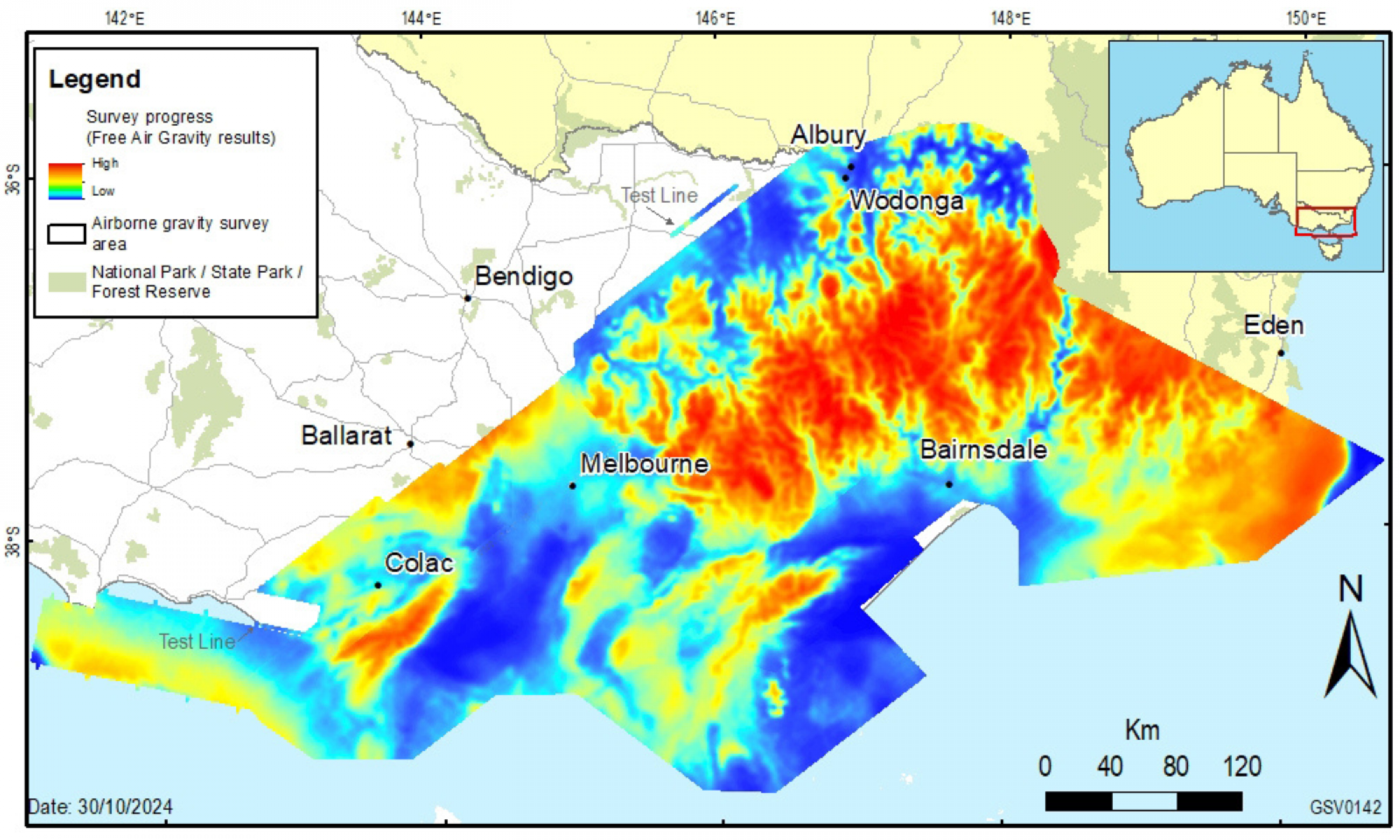On this page:
Overview
Our large-scale airborne gravity survey to capture airborne gravity data across Victoria is now complete, with final measurements taken in October 2024.
Beginning in March 2022, the aim of the survey was to collect consistent and evenly distributed gravity measurements. This included difficult-to-access areas that have historically had less gravity data coverage collected.
The survey's gravity data will greatly improve Victoria’s gravity model and the accuracy of real-world heights from GPS positioning. The data will also be used by geoscientists to further understand south-east Australia’s geological architecture and how it has evolved over time.
The survey was delivered by the Department of Transport and Planning’s Geodesy team in collaboration with the Department of Energy, Environment and Climate Action's Geological Survey of Victoria and Geoscience Australia.
Gravity surveys in Victoria
Victoria has some of the best coverage of ground gravity data in Australia, but accessing some areas to measure gravity has been difficult. These areas include the alpine, coastal and desert regions. Because they are difficult to access, gravity data coverage for these areas has been limited and the gravity model is less reliable.
The survey included 197,217 kilometres of flight lines covering approximately 150,000 square kilometres. This included the Victorian coast from Cape Bridgewater to Cape Howe, metropolitan Melbourne, and the Australian Alps.
The result is the largest airborne gravity dataset ever collected in Victoria. It will be integrated with previously captured airborne gravity surveys including coastal Gippsland (2011), south-west Victoria (2019) and Bendigo (2004, 2019), as well as land survey gravity datasets.

Flight operations
The airborne gravity survey started in March 2022 and finished in October 2024.
Survey operations were run by Sander Geophysical Limited. Experienced pilots operating two small, fixed-wing aircraft flew along a planned route with flight lines spaced either 500 metres, 1 kilometre or 2 kilometres apart.
Specialised gravity-sensing instruments were used to measure extremely small variations in the earth’s natural gravitational pull.
To ensure high quality data, aircraft were required to fly at a relatively low altitude and only in favourable weather conditions.
Survey benefits
The data and gravity model will improve the accuracy of of real-world heights from GPS positioning to within a few centimetres. The changes will support productive and effective land management and technological innovation and meet community expectations of reliable GPS positioning in Victoria.
The new data will advance the geoscience that assists the Victorian Government to manage its earth resources, infrastructure and natural hazards. It will also assist the state’s resources sector, which contributes to regional jobs and economic growth.
Data availability
The gravity data will be freely available through the Victorian Government’s open data platforms and licensed for public use.
The data will also be included in the national geoscience database and data portals managed by Geoscience Australia.
For further information, email the Geodesy team or read more in our factsheet:
Page last updated: 12/11/24